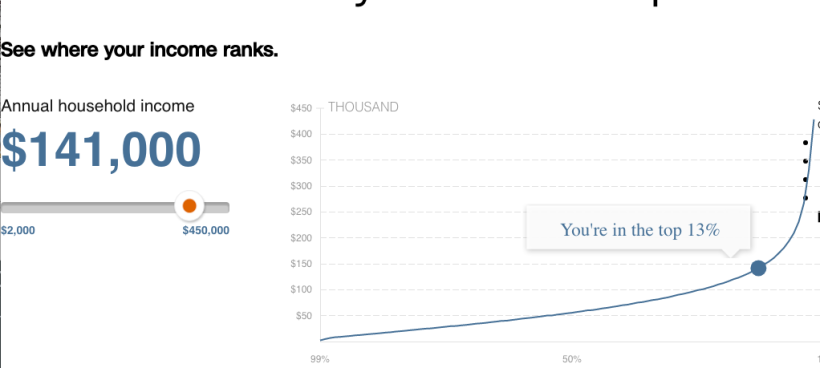Americans (and many other cultures) have a funny tendency. Out of courtesy, we do not acknowledge class. Particularly in the United States, this plays out as everyone performing “middle-class.” This is wonderful and appropriate for dinner parties, but it is harmful to activist causes and social justice. Class, like other aspects of our social identities and experiences, informs our relationship to power and influences how we interact with the world around us. Historically, class-consciousness fueled the power of labor unions and helped to maintain a progressive, redistributive tax system. Now, net income paid by the top one percent is often much less than the taxes paid by people many tax brackets below them.
Twenty three percent of Middkids come from the top one percent and there is a concentration of wealth and power within this income bracket. Even so, if a family brings home $33,000 per year, they are in the top one percent of the world.
Here are a couple of tools that can help you figure out where you fall in relation to other people in both the U.S. and around the globe. What is your class position?
Your Place within U.S. Income Distribution

If your family earns $111,000 or more, then you are in the top 20% of income earners. At Middlebury, 70% of the student population earns this much or more.

This infographic will show your income position globally. If your family earns the Middlebury median family income, then you are in the top 0.04% of the world and there are only 2,186,090 on the planet (out of 7 billion) who make more money than your family.
These tools are not meant to rank people against each other, but rather allow us to reimagine what “wealth” and “extreme wealth” look like in a global context and to motivate us to use our wealth and class positions as a tool for understanding and challenging current oppressive power structures.